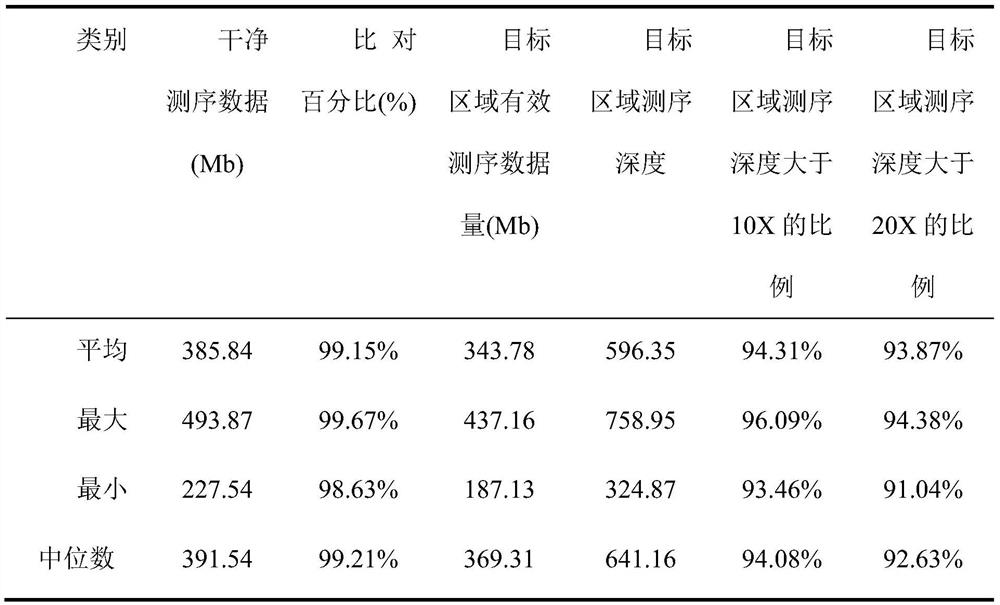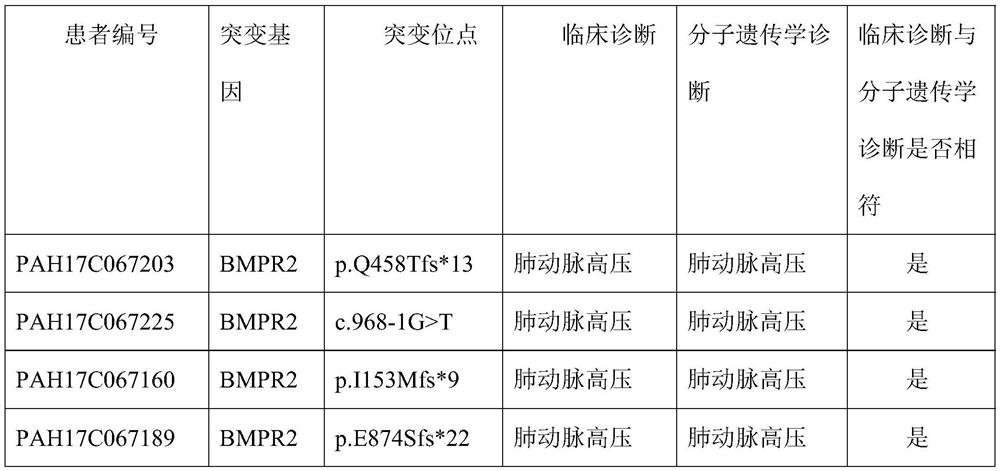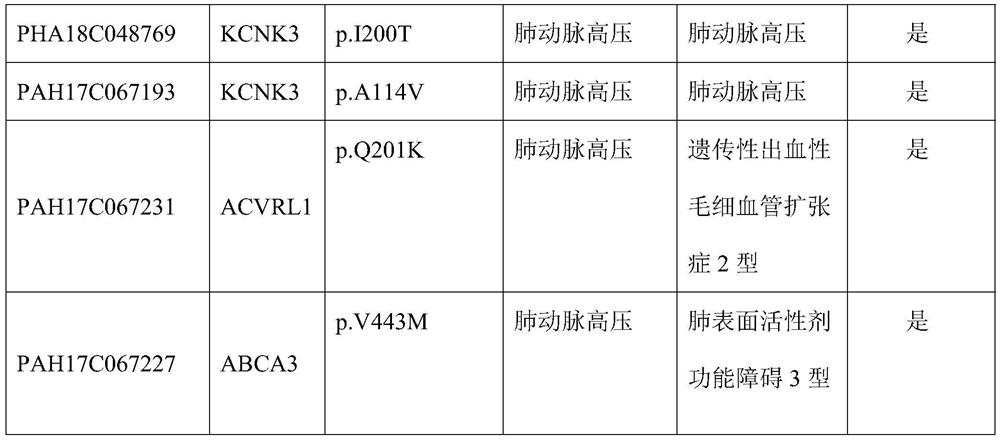A method for detecting pathogenic/susceptible genes of pulmonary arterial hypertension
A pulmonary arterial hypertension and susceptibility gene technology, applied in the field of genetic engineering and molecular genetics, can solve the problems of lagging progress, high incidence, heavy economic burden, etc., and achieve low cost, strong practicability, and many detection sites. Effect
- Summary
- Abstract
- Description
- Claims
- Application Information
AI Technical Summary
Problems solved by technology
Method used
Image
Examples
Embodiment 1
[0074] Embodiment 1 Design and preparation of the probe set of the present invention
[0075] 1. Screening of pathogenic and / or susceptibility genes
[0076] The pathogenic and / or susceptible genes in this example are: BMPR2, SMAD9, CAV1, KCNK3, ABCA3, SARS2, HTR2B, THBS1, TOPBP1, EIF2AK4, CPS1, KRT18, KRT8, ABCD4, PIEZO2, NFU1, BOLA3, ATP5A1 , ARHGAP31, DOCK6, EOGT, RBPJ, DLL4, ENG, ACVRL1, GDF2, and SMAD4.
[0077] Whole exome sequencing was carried out on 100 patients with pulmonary arterial hypertension (the patients were clinically diagnosed with pulmonary arterial hypertension in the hospital, each patient signed an informed and voluntary agreement, and was approved by the hospital's medical ethics committee), covering and testing the human genome. All exons of more than 30,000 genes are known. Among them, the mutated genes of patients with pulmonary arterial hypertension are highly concentrated. Although the remaining genes (accounting for the vast majority) of the gen...
Embodiment 2
[0083] Embodiment 2: Composition, preparation and use of the kit of the present invention.
[0084] The kit for detecting the pathogenic and / or susceptibility genes of pulmonary arterial hypertension described in this embodiment is to carry out the molecular genetic diagnosis of the individual under examination by detecting the mutations of the above-mentioned 27 pathogenic and / or susceptibility genes Or a kit for morbidity risk prediction.
[0085] 1. The composition of the kit
[0086] The components contained in the kit are: the probe set obtained in Example 1 (160 μL, 150 ng / μL), enrichment buffer (208 μL), hybridization buffer (800 μL), binding buffer (3.2 mL), washing Solution 1 (9mL), rinse solution 2 (45mL), NaOH solution (0.1M, 1mL), Tris-HCl buffer (1M, pH 7.5, 1.2mL), PCR reaction solution (580μL), TE buffer (800μL, 10mM Tris-HCl, 1mM EDTA, adjust the pH to 8.0, and adjust the volume to 500mL with water). Wherein each buffer composition is as follows:
[0087] (...
Embodiment 3
[0138] Example 3 The use effect verification of the kit of the present invention
[0139] Using the kit of the present invention (prepared and obtained in Example 2) to detect 72 samples, the results confirm that the capture rate of the target disease-causing and / or susceptibility genes is satisfactory, and more than 97.7% of the original short sequences can be compared back to the target For the reference sequence of the region, the average effective sequencing data volume of the target region reaches 343.78Mb, and the average sequencing depth of the target region is 596X (see Table 1), which is much higher than the general genetic disease diagnosis requirements (generally 20X).
[0140] Table 1 The quality of sequencing data for pathogenic and / or susceptibility genes
[0141]
PUM
 Login to View More
Login to View More Abstract
Description
Claims
Application Information
 Login to View More
Login to View More - R&D
- Intellectual Property
- Life Sciences
- Materials
- Tech Scout
- Unparalleled Data Quality
- Higher Quality Content
- 60% Fewer Hallucinations
Browse by: Latest US Patents, China's latest patents, Technical Efficacy Thesaurus, Application Domain, Technology Topic, Popular Technical Reports.
© 2025 PatSnap. All rights reserved.Legal|Privacy policy|Modern Slavery Act Transparency Statement|Sitemap|About US| Contact US: help@patsnap.com



